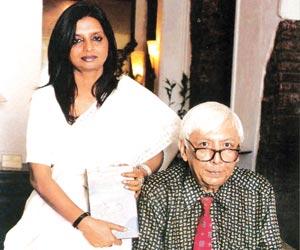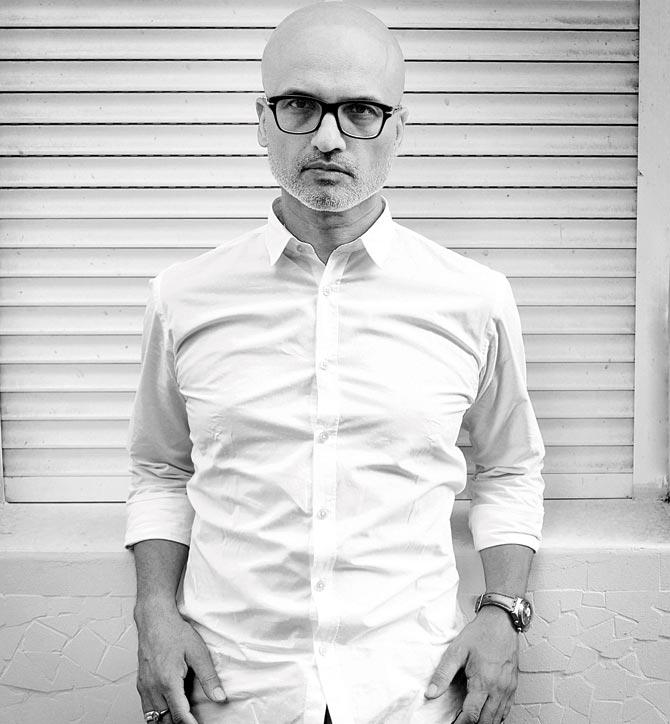Jeet Thayil's second novel re-imagines the avant-garde artistes of India

If there is one thing that writer Jeet Thayil's new novel, The Book Of Chocolate Saints (Aleph Book Company), will do, it will make you very, very curious. Rarely do you come across a literary novel where you go back to searching for clues within the multi-linear narrative. We were pondering over just one niggling question - Is Thayil's protagonist, Newton Francis Xavier, someone we know?
ADVERTISEMENT

The protagonist in The Book Of Chocolate Saints is modelled on writer Dom Moraes, who is pictured here with partner, writer Sarayu Srivatsa
Xavier, as we are told, is a "blocked poet, serial seducer of women, philosopher, recluse, all-round wild man and India's greatest living poet". Rings a bell? Not quiet, yet. As the novel progresses, we also learn that Newton was expelled from his school in Goa for creating a "woman in a hat and a sundress through which you could see her naked figure" on the wall of the boy's toilet. That, to art aficionados, would bring to mind the famed FN Souza (1924 – 2002), who history has long exonerated for drawing graffiti in the toilet at St Xavier's College in then Bombay. As the character is fleshed out - the flamboyance of his lifestyle, his earned arrogance, and the brutality of his path-breaking paintings recreated during his peripatetic life between Bombay, London, New York and New Delhi - we get a semblance of something more real.
But, here's the catch. Thayil's Xavier is also a poet, who studied at Oxford, and was published by Nissim Ezekiel. And, that's where Thayil, 58, has us in. "More than Souza, it is Dom Moraes that the arc of Newton Francis Xavier's life is modelled on," the Bengaluru-based writer says, in an email interview. "Dom's life was made for television, or the movies. He knew that on some level, because he wrote two autobiographies and was a devoted chronicler of his milieu," he adds.

Jeet Thayil. Pic/Akanksha Sharma
But, how does one explain the uncanny likeness of his protagonist with Souza, whose full name was Francis Newton Souza - the shared place of birth, the style of paintings, and obsession for nudes in particular (red-haired giantess with red nipples and red eyes and a black phallus-shape in her belly, as described in the novel). "I thought about it a good deal. The name Francis Newton Xavier echoes St Xavier, St Francis, FN Souza and Dominic Francis Moraes. Dom named his son Francis and his father's name was Frank [just like in the novel]. Also, I liked the graphic and tonal qualities of the letter x. It occurred to me that Xavier could be the name of a saint and a sinner. Goa was a natural connection. A part of the book is set there because Xavier is a native of Forgottem, a place name you have to love," says the Man Booker finalist and Sahitya Akademi Award-winning writer. As far as the painting goes, Thayil explains that the drawing on the book's cover, for instance, is by Manu Parekh whose work had seen a Souza-inspired period. "Manu was part of a very small group who remained friends with the painter throughout his life," he says.
There are moments too many in the book, where history, fact, fiction come together. And Thayil doesn't hold back from admitting to having woven his journalistic years of enquiry into putting this novel together. One interesting fictional story in the book has the mention of Prime Minister Gandhi, who invites Xavier to her residence to draw her portrait. "He had made her a blob of black against a background of newspaper headlines about the Emergency. It was a special kind of black. Really, it was the absence of all colour. And all you saw in the elongated humanoid blackness were a pair of eyes and the famous streak of white in the hair," Xavier's daughter Gill Temple tells of the painting in the novel.
"That incident, the meeting between Xavier and Mrs Gandhi, occurred to me as a possibility while reading Dom's account of his interview with the prime minister. I was particularly struck by his description of her 'frightening' eyes and the way she answered all his questions with monosyllables. This novel uses some of the techniques of journalism; and it explores the area of overlap between fiction and non-fiction. I think the distinction is mostly irrelevant in any case: it's all writing," says Thayil. The novel, he says, which takes us to Bombay of the 60s and 70s, London and New York, has been in the making for ten years. "The Bombay sections did not require much research. I knew Bombay in the late seventies, eighties and nineties. For someone of my generation, it isn't 'old' Bombay. It's the city we used to know and love. I was living in New York during 9/11 but for some reason, that sequence required a lot of research, as did the scenes set in London," says Thayil.
As large as this novel is - it spills into 500 pages - the book is easy to devour, with Thayil experimenting with various narrative styles. One gets to see an interesting mix of verse and storytelling as relayed through multiple voices. "I try not to bore the reader, or myself, though of course, I'm not always successful," he says of why he enjoys experimenting with the idea of the novel. "I think pleasure is a reason to write a novel - and to read it - and one of the ways of doing this is to break the form.
 Subscribe today by clicking the link and stay updated with the latest news!" Click here!
Subscribe today by clicking the link and stay updated with the latest news!" Click here!






